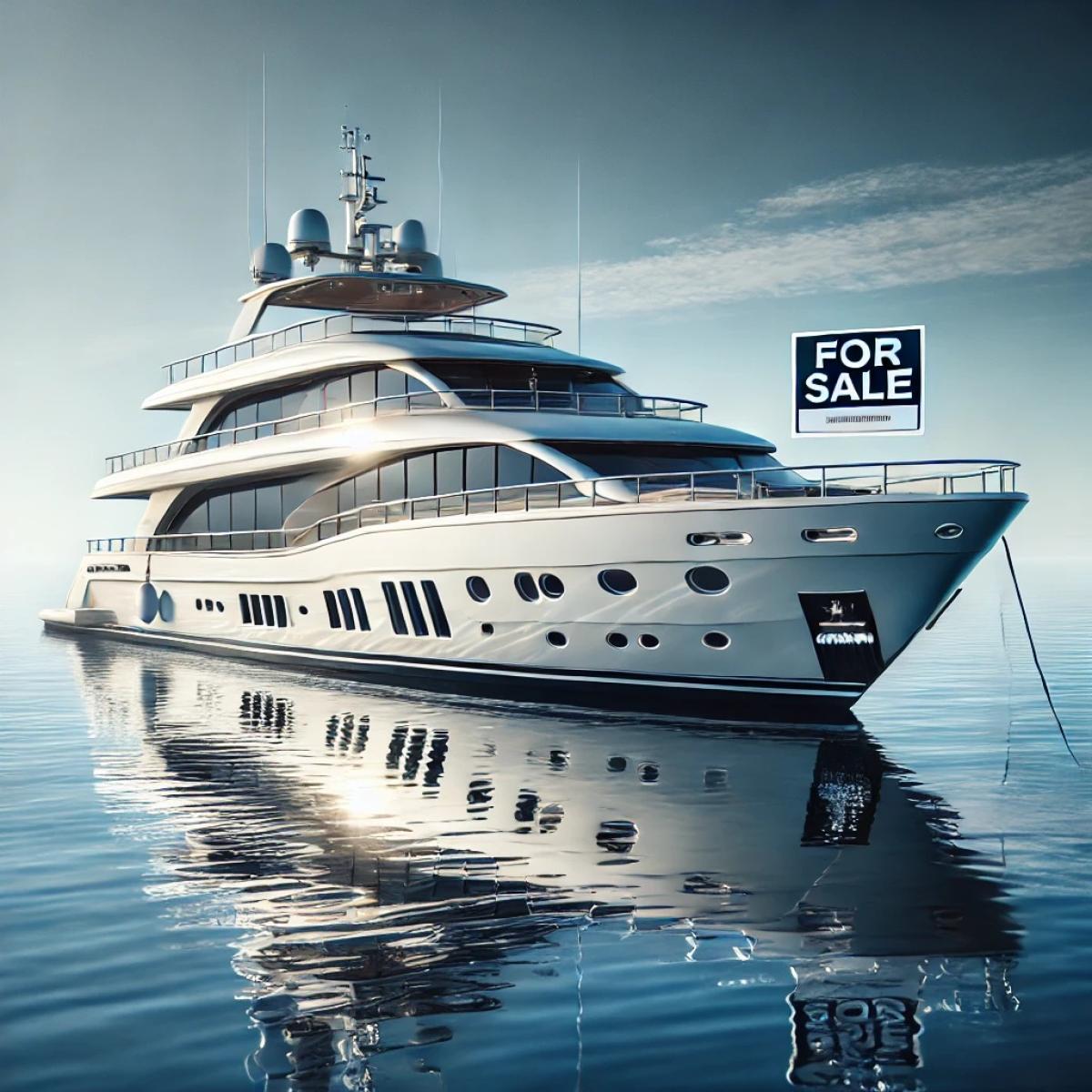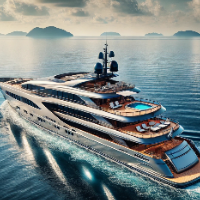What’s The Difference Between Motor Yachts And Sailing Yachts For Sale?

Introduction
In 2025, the yacht market is evolving faster than ever—think sustainable propulsion, smart features, and an influx of younger, tech-savvy buyers. Whether you're in the market for a sleek motor yacht or a graceful sailing vessel, understanding the differences matters more than ever. This article explores the key distinctions between motor yachts and sailing yachts for sale—highlighting design, cost, performance, lifestyle, and market trends—so you can make an informed decision aligned with today’s dynamics and buyer expectations.
1. Design & Propulsion
Motor Yachts
Motor yachts rely on engine power, offering smooth, high-speed cruising. Recent innovations include hybrid propulsion models—such as hydrogen fuel-cell and biofuel-capable generators—capable of emission-free short-range cruising while relying on sustainable fuels for longer passages.
Such vessels emphasize speed, luxury, and advanced onboard systems—but typically come with higher operational costs and ecological considerations.
Sailing Yachts
In contrast, sailing Yachts for sale harness the wind, relying on rigging and sails. They offer a classic, eco-friendlier experience. Modern sailing yachts increasingly adopt hybrid or electric propulsion for maneuvering or motoring in calm conditions. This adds versatility without compromising the essence of sailing-based travel.
2. Operating Costs & Environmental Impact
Motor Yachts
These yachts burn more fuel and often incur higher maintenance and operational fees. Superyachts in particular can have a significant environmental footprint—emitting large amounts of carbon and contributing noise, light, and marine pollution.
Sailing Yachts
Typically more fuel-efficient, sailing yachts offer lower ongoing costs. Combined with emerging electric and hybrid systems—that reduce noise and carbon emissions—they appeal to environmentally conscious buyers. This aligns with the 2025 trend toward sustainability and eco-friendly yachting.
3. Lifestyle & Performance
Motor Yachts
Offering unmatched speed and comfort, motor yachts provide a luxurious, high-speed lifestyle. Imagine amenities like spas, multiple decks, water toys, and even helicopters—some of which ultra-rich owners incorporate to craft floating palaces of indulgence. These are ideal for fast coastal runs or glamorous social cruising.
Sailing Yachts
For many, sailboats represent a tranquil connection with nature and a hands-on, adventurous voyage. While generally slower, modern sailing yachts emphasize wellness, privacy, and experiential travel. They’re increasingly designed with co-working spaces, eco-friendly materials, and family-oriented layouts—reflecting rising preferences among younger yacht buyers.
4. Market Trends & Buyer Preferences
Motor Yachts
The demand for bigger, more personalized, and smarter motor yachts is rising in 2025. The luxury market shows strong growth, driven by ultra-high-net-worth individuals seeking cutting-edge features and customization. Brokerages report robust activity—hundreds of yachts sold globally—showing high total sales value despite slightly lower average prices and longer listing times.
Sailing Yachts
Sailing yachts—particularly catamarans and explorer-style vessels—are gaining traction for their stability, space, and versatility. Brands focusing on eco-friendly catamaran designs are expanding demand and production.
Additionally, a growing buyer demographic—young, tech-forward, and wellness-oriented—prefers sailing yachts designed for multifunctional use and family cruising.
5. Resilience & Market Stability
A Balanced Market for Motor Yachts
While the new build pipeline is constrained, the brokerage market is stable—especially when pricing is realistic, condition is good, and locations are well-connected. Listings remain on market longer, giving buyers time to weigh options carefully.
Regulatory challenges—such as tariffs and crew documentation crackdowns—are affecting buyer behavior, pushing some towards pre-owned models to avoid inflated costs.
Sailing Yachts & Market Entry
Sailing vessels often appeal to first-time buyers or those interested in lifestyle-oriented assets. With rising interest and niche innovation, these yachts provide lower-emission alternatives and experiential value.
6. Choosing the Right Yacht for You
Consideration
Motor Yacht Features
Sailing Yacht Features
Speed & Range
Fast, engine-driven autonomy
Slower; dependent on sails and wind, with hybrid backup
Lifestyle & Amenities
High luxury, engineered comfort, lavish interiors
Simpler elegance, nature-centric, wellness-focused design
Environmental Impact
Higher fuel use, emissions
Lower carbon footprint; hybrids improve economy
Cost & Operations
High running & maintenance costs
Lower fuel cost; skill-based handling
Resale & Market Trends
Growing demand; stable resale market
Rising interest in eco & family-focused sailing models
Ideal Buyer Profile
Luxury seekers, high-speed leisure, larger families
Adventure-oriented, environmental, experiential cruising
Conclusion
The distinction between motor yachts and sailing yachts for sale isn't just about propulsion or aesthetics—it's about matching the vessel to your lifestyle, values, and expectations in 2025’s dynamic market. Motor yachts deliver luxury, speed, and hands-off comfort—but at a higher ecological and operational cost. Sailing yachts offer connection with nature, lower environmental impact, and growing appeal among modern buyers.
Whether you're drawn to the opulence of a motor yacht or the experiential freedom of a sailing vessel, the current trends toward sustainability, smart features, and family-centric design mean both categories are evolving—and both present compelling options depending on your priorities.
Frequently Asked Questions (FAQ)
1. Are sailing yachts more eco-friendly than motor yachts?
Yes. Sailing yachts primarily use wind power, significantly reducing fuel consumption. Advances in hybrid and electric propulsion further enhance their environmental profile. In contrast, motor yachts typically use diesel engines and have a larger carbon footprint.
2. Which type of yacht has lower operating costs?
Sailing yachts generally have lower routine operating and fuel costs due to wind usage. Motor yachts feature more onboard systems and engines, leading to higher fuel use and maintenance.
3. What's the best choice for long-distance cruising?
Motor yachts offer speed, range, and comfort — ideal for fast passages. Sailing yachts provide an experiential journey but may rely on hybrid systems or slower passages in calm conditions.
4. Are younger buyers preferring sailing yachts now?
Yes. Younger, affluent buyers are favoring yachts that offer wellness, eco-consciousness, flexible layouts, and digital connectivity—qualities often found in modern sailing or explorer-style yachts.
5. How robust is the resale market for used yachts?
The brokerage market remains steady, especially for well-priced, well-located motor yachts. Pre-owned models are in demand—especially to dodge inflated costs due to tariffs or supply constraints.
6. Are eco technologies being adopted in yachts?
Absolutely. The industry is embracing electric, hybrid, hydrogen, and cleaner fuels like methanol. Hydrogen-powered superyachts are already pioneering zero-emission luxury propulsion.
7. What is driving the popularity of catamarans?
Catamarans offer space, stability, and efficient cruising—making them attractive to families and eco-conscious buyers. Builders are leading this trend with sustainable, luxury catamaran designs.
8. How have tariffs affected yacht purchases?
Tariffs and crew documentation requirements have made new builds more expensive, prompting many buyers to consider pre-owned yachts already available in domestic waters.
